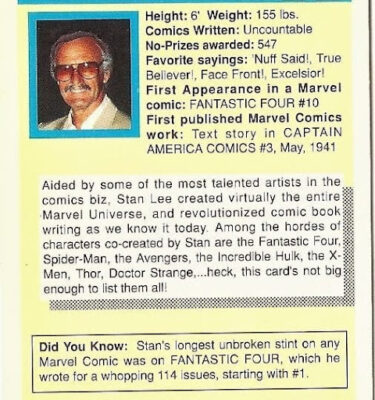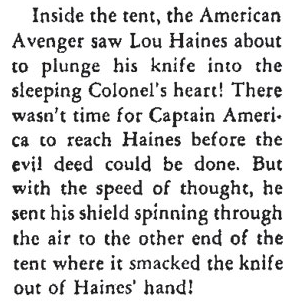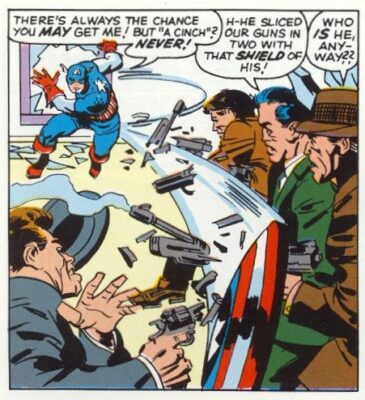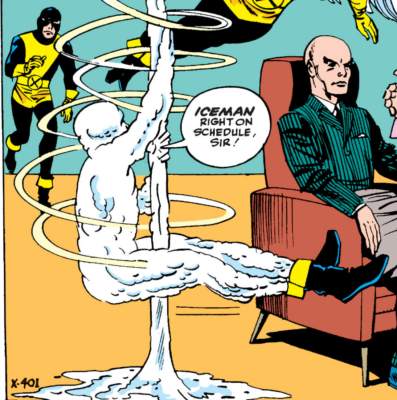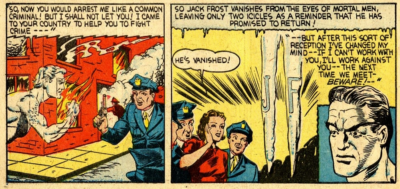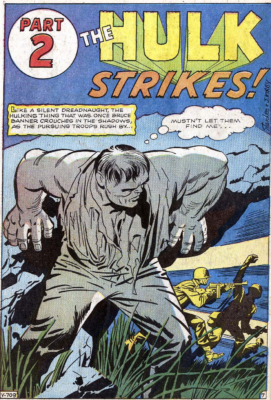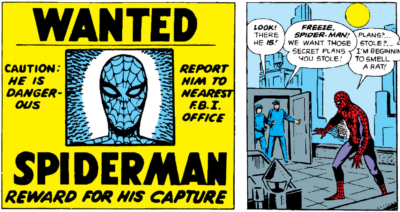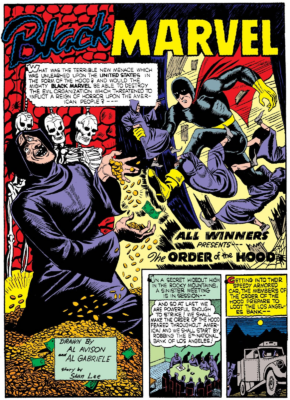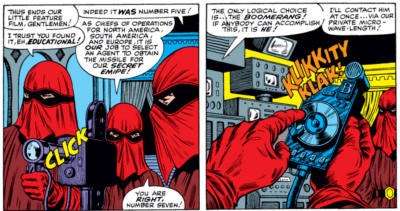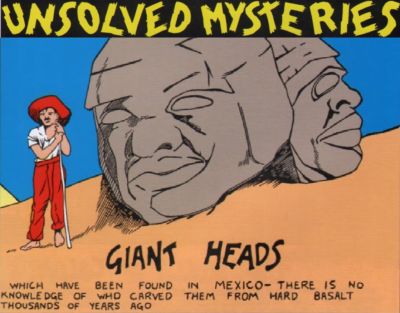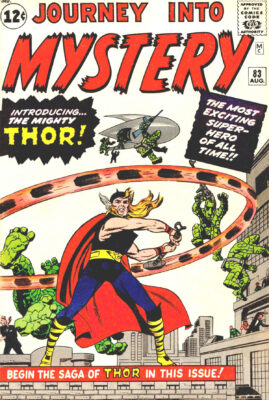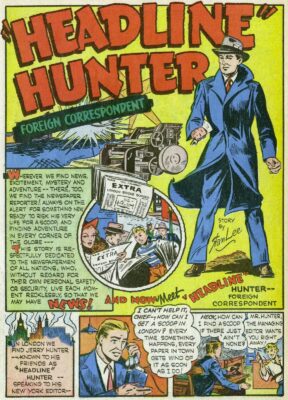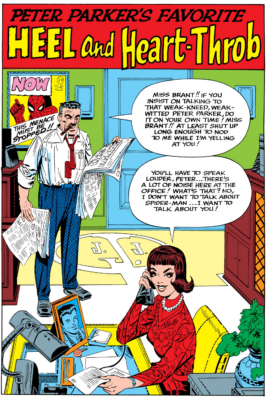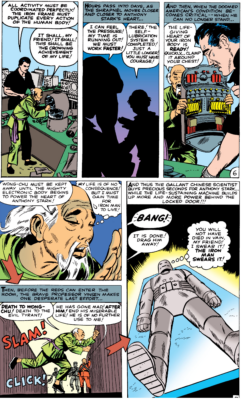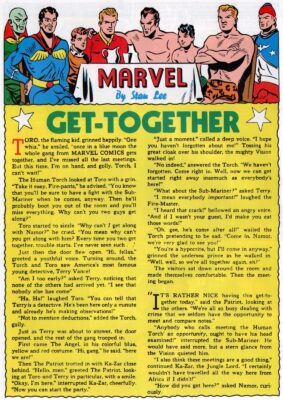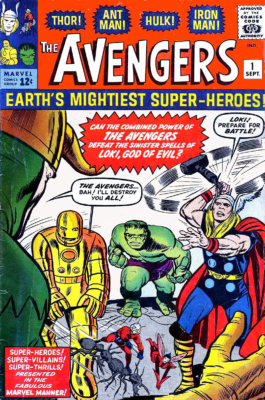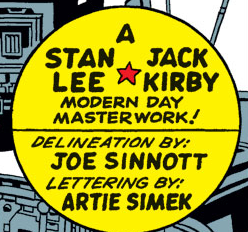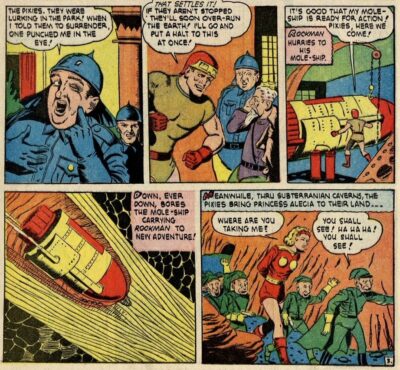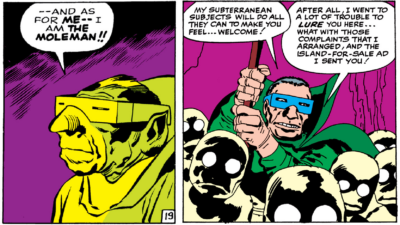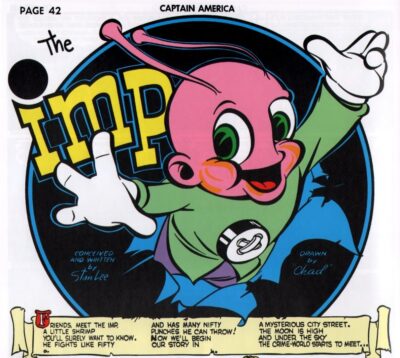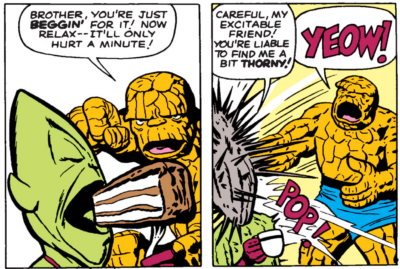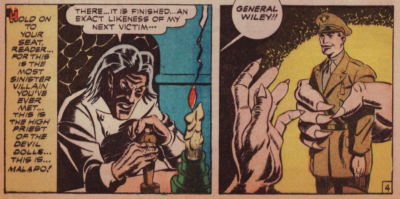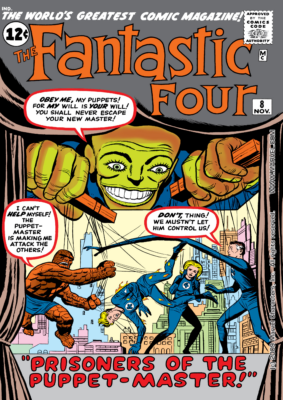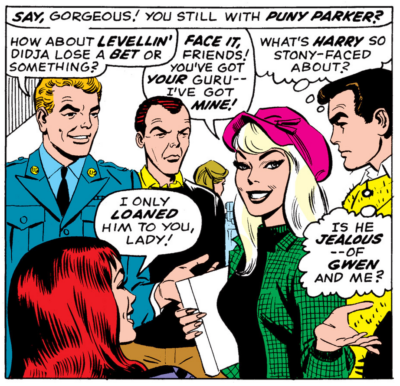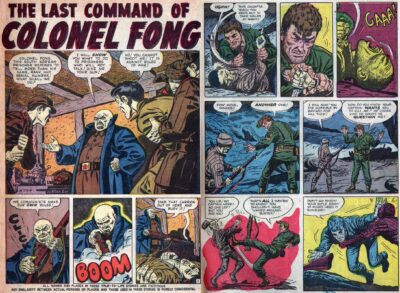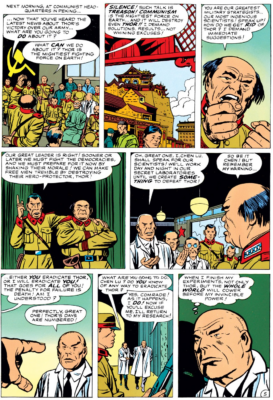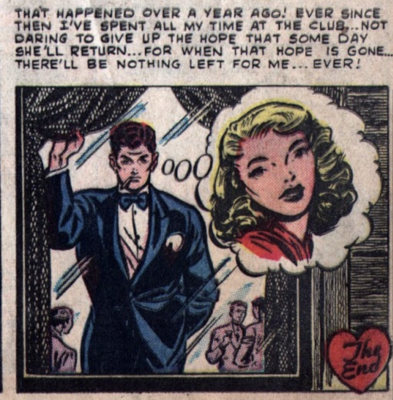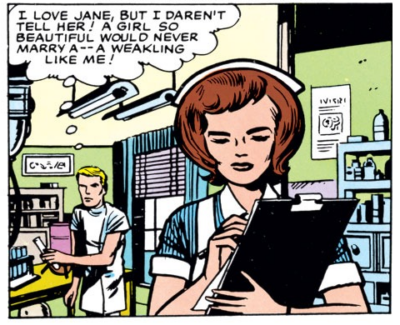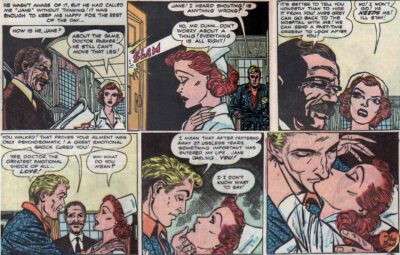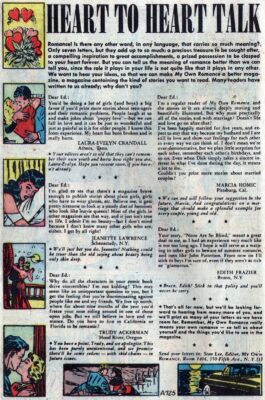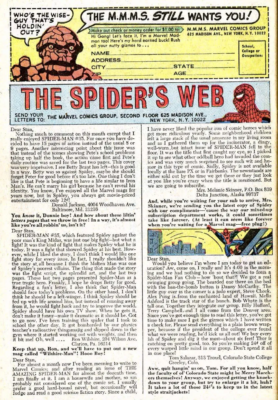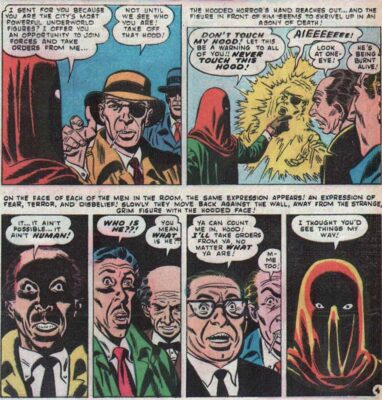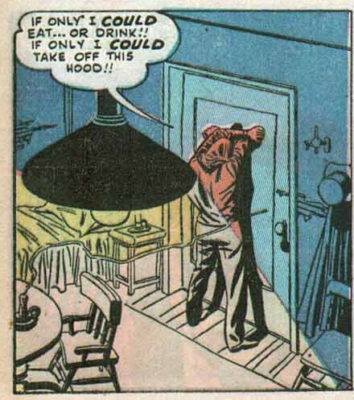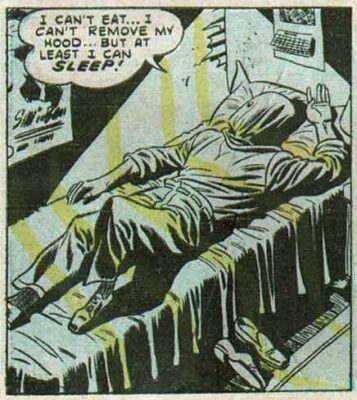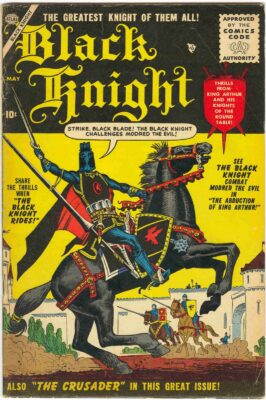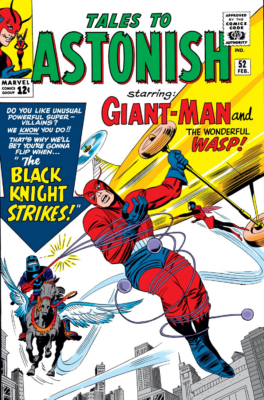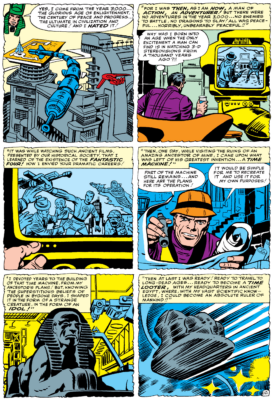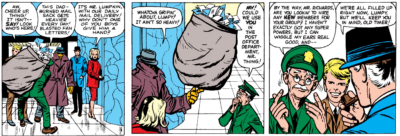Stan Lee, co-creator of the Marvel Universe by Alex Grand
Read Alex Grand’s Understanding Superhero Comic Books published by McFarland Books in 2023 with Foreword by Jim Steranko with editorial reviews by comic book professionals, Jim Shooter, Tom Palmer, Tom DeFalco, Danny Fingeroth, Alex Segura, Carl Potts, Guy Dorian Sr. and more.
In the meantime enjoy the show:
Stan Lee is beloved by most fans, but is often falsely thought of as the sole creator of the Marvel Universe and its characters. With his cameos, Lee had a Walt Disney type presence in modern pop culture, but my previous articles on Jack Kirby and Steve Ditko show that his fellow co-creators brought ideas and plots, but were not credited as fellow co-writers or co-plotters. They were labeled as artists which was true but ignored the story they brought to the comic book. On the Who did what article, all three were interviewed and at one time or another mentioned that it was generally collaborative. Sometimes money or anger was involved, and the creators would sway into saying they alone were the main creator of a character or story. Actually that was more in the case of Lee and Kirby, because Ditko was generally consistent in his recollections of who did what. Truthfully, Lee did not create that universe from whole cloth like he claimed at times, but it’s also incorrect to say he didn’t contribute anything.
Julius Schwartz was an editor who co-plotted with writers and artists on many stories, and then he would change the dialogue at times to the point where the original writer’s script was no longer recognizable. Schwartz called this editing. With Marvel, Lee used the Marvel method, where he would co-plot with the artists, and they would tell the story through pacing and pictures then even add dialogue on the borders. Lee would examine this and edit that dialogue and add his own dialogue in, then called himself a writer while the artist was called an artist, even though he really was co-writing and editing meanwhile forcing the artist to be a co-writer without a writer credit. Lee also oversaw the entire line of comics and built a cohesive Marvel Universe by making sure that all the comics fit together like lego pieces. This stance makes him a tremendous and creative editor, co-plotter, and dialogue writer which is not what he is given credit for. This makes Lee the most overrated creator and underrated editor in comic history. On the YouTube channel, a great point was made in the comments which read along the lines of, “You spotted precursors from Kirby and Ditko and what they brought to plots in the Marvel Silver Age so why don’t you do the same thing with Stan Lee.” This is a fair request, and if done right, would present an even handed approach to analyzing and breaking down what ALL three men brought to the creative process. The main trick here though was finding stories that Lee specifically wrote, which isn’t as easy as spotting Kirby or Ditko art. Luckily I follow Doc Vassalo and his Timely-Atlas blog. Vassallo has written forewords for Marvel Masterworks, The Secret History of Marvel Comics with Blake Bell, and Atlas at War. I have tremendous respect for him, and he methodically researched and listed every story that Stan Lee wrote for Marvel leading up to 1961’s Fantastic Four with Jack Kirby.
I read through each one with a fine toothed comb and spotted Stan Lee plots and concepts that were re-used and published in the 1960s Marvel Silver Age which means that those were ideas likely brought by him to Kirby and Ditko for their plotting sessions. I will only post splices or portions, so for complete viewing of the pieces in question, go to Doc Vassallo’s blog to read the complete works.
Moving through chronological order, Lee’s first story was for Captain America Comics 3, 1941 in a two page text insert that was there to reduce shipping costs for the post office. Note it’s not a comic, but is notable in that this is the first mention of Captain America throwing his circular shield like a disc at a far away target.
Prior to this, Simon and Kirby used the shield in a defensive manner or to enhance a punch. This method of offensive attack is still used today by various artists, writers and filmmakers and was also used by Lee and Kirby in Cap’s first Silver Age Marvel appearance in Avengers 4, 1964.
Stan Lee’s first comic book story credit goes to his creation of Jack Frost illustrated by the Blue Beetle creator, Charles Nicholas. Reading this story has two interesting precursors, one is for the character Ice-Man who first appeared in Uncanny X-Men 1, 1963.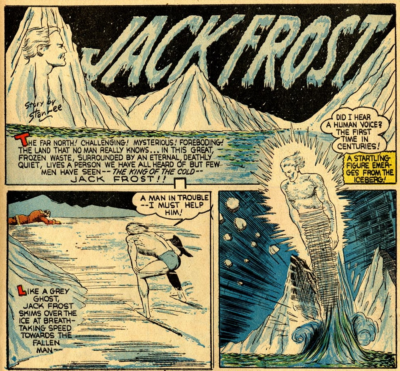
The name is clearly old fashioned but his ice powers and frosty aesthetic are clearly in the same vein as Ice-Man who started as a snow based character which eventually crystallized into the Ice-Man character that people know today.
The second characteristic that seems very much in the same manner as the Incredible Hulk is that he is misunderstood by authority figures like the police or the military, causing him to become angry and antagonist toward society.
Yes its true that Bill Everett did the same with Sub-Mariner, but Lee appears to be very much embracing the concept which would define many Marvel characters later like Spider-Man who had the same issues with the law.
The Black Marvel is one of those forgotten characters of Timely’s Golden Age, but the specific issue written by Stan Lee All Winners Comics #1 1941 is really fascinating.
He writes about The Order of the Hood, a secret society or hooded crime syndicate conspiring for wrongdoing which is reminiscent of The Secret Empire created by Lee and Kirby in Tales to Astonish 81, 1966. This hooded terrorist group was a branch of Hydra conspiring to tear down western civilization.
Jack Kirby held a fascination with ancient aliens and gods going back to his early days at comics, and Lee expressed far less interest in this topic however there does seem to be one byte of interest from him in Young Allies Comics 1, 1941. Lee introduces to the reader that there are Unsolved World Mysteries including the Giant Heads of Mexico which many infer to be the result of ancient aliens or gods from “thousands of years ago.”
This can be linked to the Norse Gods and the Easter island stone men monsters that attacked Thor present in Journey Into Mexico 83, 1962, however Kirby’s precursor list to this concept are far stronger and more consistent.
Stan Lee and either Charles Nicholas [or Harry Fisk] created another character for Timely, Headline Hunter for Captain America Comics 5, 1941. This foreign correspondent often demonstrated a nose for news behind front lines to deliver updates of enemy activities to the west.
It’s here that Lee is expressing interest in journalists at the newsroom and their quest to find injustices by spotting a story or opportunity. Lee and Ditko placed Peter Parker, the alter-ego of the Amazing Spider-Man at a newspaper organization called the Daily Bugle. As a photographer, he was close to developing stories or would turn in photos to his editor and headline hunter, J. Jonah Jameson.
The Destroyer is another forgotten Timely hero created by Stan Lee and Jack Binder in Mystic Comics 6, 1941. The Destroyer was another journalist named Keen Marlow who is captured behind enemy lines in Nazi Germany during World War Two. He is trapped with a fellow prisoner, Professor Eric Schmitt who sacrificed himself to bestow the power upon Marlow to become the super strong Destroyer and break out.
This is really the same set up as Tony Stark behind North Vietnamese communist enemy lines during the Vietnam War, trapped with Professor Ho Yinsen. Yinsen also helped Stark develop the Iron Man armor and escape at the cost of his own life.
Another text insert written by Stan Lee was Marvel Get-Together where various Golden Age heroes interact and team up in Marvel Mystery Comics 25, 1941.
This really is speaking to Lee’s later job in co-assembling the newly created Silver Age characters into the Mighty Avengers 1, 1963. It’s really a testament to Lee’s curiosity of how different personalities could or couldn’t get along through their dialogue.
By the time Mystic Comics 7, 1941 came out in September of that year, Lee was very comfortable working with the dynamic and talented Al Avison to the extent of crediting this Destroyer story, The Machine of Death as a combined talent feature thriller.
Stan would eventually do something similar with his credits with Jack Kirby in the later issues of the Fantastic Four like issue 59, 1967 by clumping them together in a circular shape to express that both creators contributed to the book.
Lee did something like this on the first Fantastic Four issue with both names paired with each other and not specifying who did what. Soon after this, Lee made the credits with him as writer and Kirby as artist. The later credit that called their collaboration “A Stan Lee – Jack Kirby Modern Day Masterwork” seemed to be some method for Lee to rectify the imbalance of credit on previous issues.
Rockman Underground Secret Agent was created by Basil Wolverton in USA Comics 1, 1942, however issue three was written by Stan Lee and drawn by Charley Nicholas and discussed an underground race of little people, as well as Rockman’s mole-ship.
This concept seems very much in line with the Mole Man created by Lee and Kirby for Fantastic Four 1, 1961 who lived and traveled under the ground. The little people who live with Rockman are very similar to the later Moloids, also known as the Mole People in Fantastic four 22, 1964. As silly as these points may seem by modern standards, it was Lee’s experience with concepts like this that made it a simple task for him to co-plot and script new characters.
The Imp was created by Stan Lee and Chad Grotkopf in Captain America Comics 12, 1942. This was about a small green clothed creature whose cartoon-like qualities made him both formidable and annoying to his enemies. Although not a superhero or super villain by many comic readers’ standards, he was an odd toon-like protagonist.
This was a similar or same concept as the Impossible Man from Fantastic Four 11, 1963. This character, also small and green could manipulate his body in a manner like that of a cartoon which defied all normal standards of physics and entered the realm of the impossible.
One name that Stan Lee seemed to go back to a lot was the name “Crusher” used a couple times in the Silver Age. He used the name as far back as in Mystic comics 8, 1942 in The Challenger written by Stan Lee and art by Mike Sekowsky and George Klein. Essentially this Crusher character was the “World’s Strongest Wresler” whom he brings the same type of guy into the first appearance of Spider-Man in Amazing Fantasy 15, 1962.
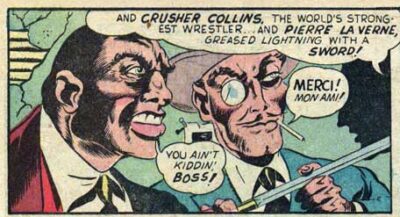 Crusher is the same name in Amazing Fantasy 15, 1962 describing a wrestler that Peter Parker goes up against for extra cash. He used the same name or a similar bald and strong figure for Crusher Creel, the Absorbing Man in Journey Into Mystery 114, 1965 who looks the same as the other Crusher in the previously mentioned issue.
Crusher is the same name in Amazing Fantasy 15, 1962 describing a wrestler that Peter Parker goes up against for extra cash. He used the same name or a similar bald and strong figure for Crusher Creel, the Absorbing Man in Journey Into Mystery 114, 1965 who looks the same as the other Crusher in the previously mentioned issue.
Stan Lee wrote Young Allies 10,1 1943 The Horror of the Doll-Devil regarding a villain who uses black magic to manipulate people’s bodies using Voo-Doo dolls. Voodoo-ism was a common trope in the 1940s and 1950s, however it was used early by Lee which seemed to be helpful in a later Silver Age story.
That story concerns the Radioactive dolls used by the Puppet Master who caused a similar type of mischief in Fantastic Four 8, 1962.
What Lee seemed to excel at though was juvenile romance in the Teen genre. His tongue in cheek dialogue was present as far back as in comics like Millie the Model, Sherry the Showgirl, and Homer Hooper 3, 1953.
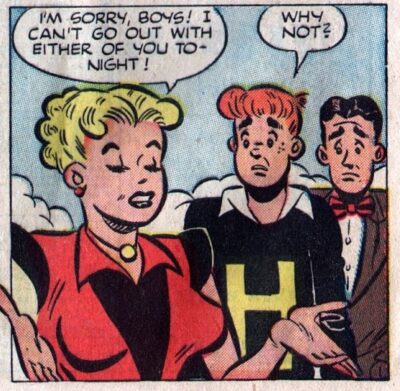 The similarity of this comic to Archie is obvious, but this work carries directly into Lee’s transformation of Spider-Man to a teen drama with love triangles. After Ditko left the book, either Gwen Stacy was wanted by other fellows like Flash and Harry or Peter was wanted by both Gwen and Mary Jane. Either way, Lee enjoyed the times when he made a central figure the target of a couple people’s attention.
The similarity of this comic to Archie is obvious, but this work carries directly into Lee’s transformation of Spider-Man to a teen drama with love triangles. After Ditko left the book, either Gwen Stacy was wanted by other fellows like Flash and Harry or Peter was wanted by both Gwen and Mary Jane. Either way, Lee enjoyed the times when he made a central figure the target of a couple people’s attention.
The last command of Colonel Fong from Battle 17, 1953 is a perfect example of Lee writing a war book that dealt with the communists in North Korea. The large bald Colonel was ruthless in the way he treated his own men and the enemy.
This anti-communist plot point makes it into many early stories written by Lee during Marvel’s early years. The Korean War gave Lee plenty of practice writing and editing scripts about Americans fighting the imposing communist threat during the so-called Atomic or Television Age of comic books. This experience appears to have made it into the Silver Age of Marvel when Lee scripted and co-plotted the origin of Iron Man and early Thor comics like Journey Into Mystery 93, 1963 where communist China uses their science to create the Radio-Active Man.
Other than commies, Lee often wrote about unrequited love where a person romantically longed for another character, but they were tragically alone and unreciprocated in those feelings. This form of romantic tragedy added some spice to a superhero story by throwing in juvenile emotions that connected teenage readers. An early example is found in Actual Confessions 13, 1952 called “Love ‘Em and Leave ‘Em” with script by Stan Lee and art by Werner Roth.
The central character stands at a window unfulfilled because his true love does not love him back. In Uncanny X-Men 3, 1963 Lee dialogues both Cyclops and Professor X to have unrequited love for Cyclops. Professor X’s involvement in this love triangle was wisely dropped from the storyline, because frankly it’s gross.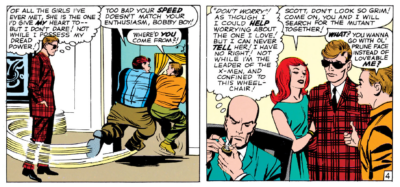 Unrequited love was all over Marvel’s Silver Age like Journey Into Mystery 89, 1963 showing the blonde Donald Blake, aka The Mighty Thor’s human alter-ego pining for Nurse Jane Foster.
Unrequited love was all over Marvel’s Silver Age like Journey Into Mystery 89, 1963 showing the blonde Donald Blake, aka The Mighty Thor’s human alter-ego pining for Nurse Jane Foster.
But there is another romantic precursor that both examples link to and that’s in My Own Romance 27, 1953 for “Love Story” with script by Stan Lee and art by later DC superhero artists, Carmine Infantino and Gil kane.
A blonde man falls in love with very similar nurse named Jane Grey who very much looks like and has the same first name and profession as Nurse Jane Foster from the later Thor stories. However, her last name is Grey, the same last name as Jean Grey from the X-Men. These damsel’s in distress, although feisty, are intimately tied into Lee’s creative DNA including their names and placement in their stories.
Lee also took time to interact with fans on the letters pages, sometimes putting in fake letters he wrote, but also responding to fan questions. He undoubtedly brought that fun interaction to his comics and created a sense of comradery with readers. Here is a pre-Marvel example from My Own Romance 24, 1952 whose answers show a developing sense of how to engage the reader, “Your editors aren’t so old that they can’t remember their own youth and know how right you are.”
By the time Lee gets to the 1960s, this level of engagement had hit a professional and intuitive level where his sense of what would work on the letter’s page became very refined. This letters page is from Amazing Spider-Man 39, 1966 and his sense of timing through dialogue is at its peak with lines like, “Anyway, we enjoyed getting the knockdown to your group, but try to enlarge it a bit, huh? It takes a lot of those 24 cents to keep us in the latest style straitjackets!”
There was no other editor at the time that could match this level of interactive banter with his adoring crowd.
The Red Hood was created by Bill Finger in Detective Comics 158, 1951 as the original masked alter ego of the Joker before he fell into a vat of chemicals. However Lee wrote a more ominous version of this in the Hooded Horror in Mystic 12, 1952 whose modus operandi was much like the Red Hood from season three of the live action Titans live-action show in 2021. The Hooded Horror gathered the local mob bosses and threatens them with certain death unless they work for him and give him a percentage of their profits.
However, this character relates to the Marvel Silver Age through a character that entertained fans of the Falcon and Winter Soldier television show of the same year. Baron Zemo was first created for Avengers 4, 1964 but had his origin explained in Avengers 6. This red hooded figure was fighting Captain America during World War 2 and his secret Adhesive X spilled on him fusing his mask to his face.
Lee’s Hooded Horror from 1952 carried this same dark secret and laments over the same problem as the later Zemo repeating, “If only I could take off this hood… I can’t remove my hood… but at least i can sleep!”
Although he was a character feared by his enemies, he lived with the curse that his mask and face were one and the same.
A famous character created by Stan Lee and Joe Maneely was the Black Knight created for Black Knight 1, 1955 about Sir Percy of Scandia, servant and warrior for King Arthur and Merlin. His Ebony blade was forged by Merlin from a meteorite that landed on earth.
Lee brought back this figure’s alter-ego through Sir Percy’s descendant, Professor Nathan Garrett who was unworthy to wield the Ebony blade and so recreated himself as the Black Knight through advanced technology. Garrett’s Black Knight premiered in Tales to Astonish 52, 1964 and was created by Stan Lee and Dick Ayers, likely at Lee’s direction.
The second Black Knight fought Giant Man in his first appearance and later joined the villainous team of the Masters of Evil who premiered in Avengers 6, 1964. Garrett’s character inspired Roy Thomas and John Buscema to create the third Black Knight, Dane Whitman in Avengers 47, 1967 who is in the 2021 film, Eternals.
In Adventures into Weird Worlds 14, 1943 written by Stan Lee and art by Infantino and Kane, there was an alien from Saturn who was exhiled to earth because he was the first murderer on the peaceful planet in three thousand years. This bad seed caused havoc wherever he went and finally was killed off in the story.
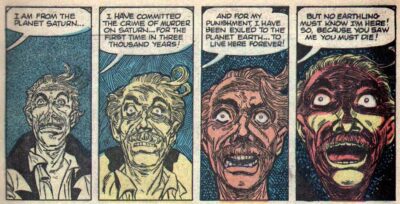 This numerically and conceptually lines up with the Origin of Rama-Tut aka Kang in Fantastic four 19, 1964 when the villain brags to the quartet that in the year three thousand, he was the only one on Earth not satisfied with peace. This bad seed was so restless and blood thirsty, that he traveled back in time in order to engage in war and murder. Not the same character, but the same number of years and origin concept for both villains.
This numerically and conceptually lines up with the Origin of Rama-Tut aka Kang in Fantastic four 19, 1964 when the villain brags to the quartet that in the year three thousand, he was the only one on Earth not satisfied with peace. This bad seed was so restless and blood thirsty, that he traveled back in time in order to engage in war and murder. Not the same character, but the same number of years and origin concept for both villains.
Stan Lee wrote the newspapers trip, Willie Lumpkin with future Archie comic artist, Dan DeCarlo from 1959 to 1961.
 The first issue of Fantastic Four 1, 1961 was released a bit after the last Willie Lumpkin strip and Lee brought his character as a much older man into Fantastic Four 11, 1963. Lumpkin was the mailman at the quartet’s Baxter Building delivering mail and offering a bit of humanity to the super powered comic book.
The first issue of Fantastic Four 1, 1961 was released a bit after the last Willie Lumpkin strip and Lee brought his character as a much older man into Fantastic Four 11, 1963. Lumpkin was the mailman at the quartet’s Baxter Building delivering mail and offering a bit of humanity to the super powered comic book.
The importance or cleverness of the above factors aren’t the debate here; it is the question of which plots likely came from Stan Lee vs Jack Kirby or Steve Ditko. Kirby and Ditko’s precursor plots were discussed in other articles, so in giving Lee the same treatment it is clear that there are plots, good or bad, that likely came from him, or that he co-plotted heavily and added his two cents. Historians can’t focus too much on an agenda that keeps them from seeing that Lee had his own creativity and contributions toward an amazing era of comic books. At the same time, it is ridiculous to say that Stan wrote and created 1960s Marvel while Kirby and Ditko only drew his vision. Neither are true, but it certainly becomes fascinating to see that each creator brought their own ingredients to make a sequence of comics capture the attention of juveniles for decades to come.
Join us for more discussion at our Facebook group
check out our CBH documentary videos on our CBH Youtube Channel
get some historic comic book shirts, pillows, etc at CBH Merchandise
check out our CBH Podcast available on Apple Podcasts, Google PlayerFM and Stitcher.
Use of images are not intended to infringe on copyright, but merely used for academic purpose.
Images used ©Their Respective Copyright Holders









